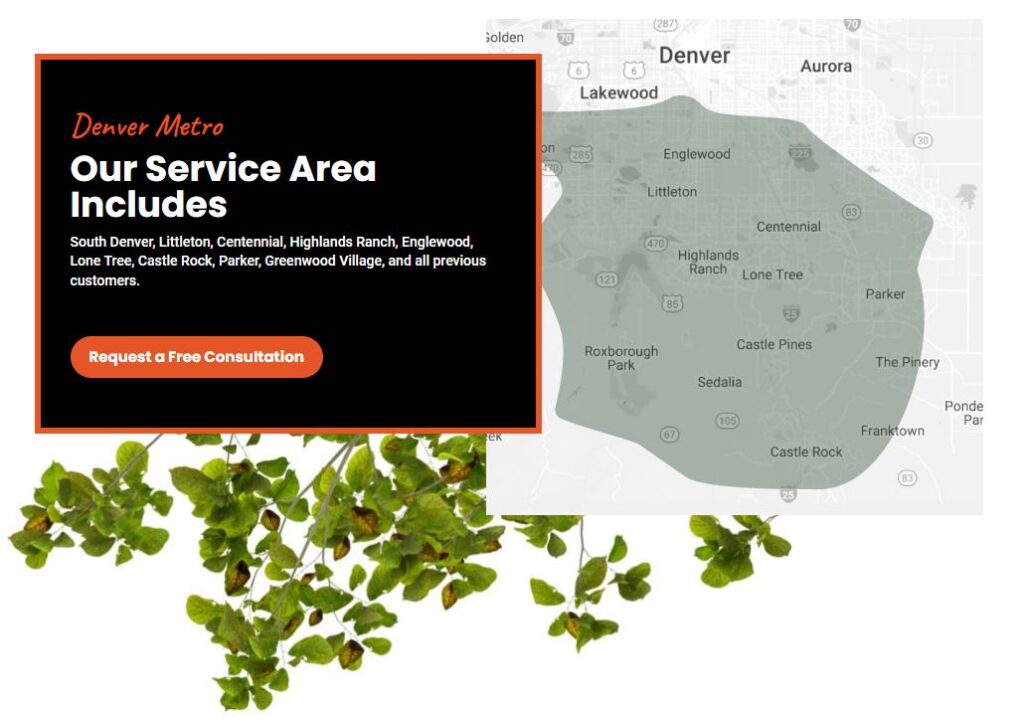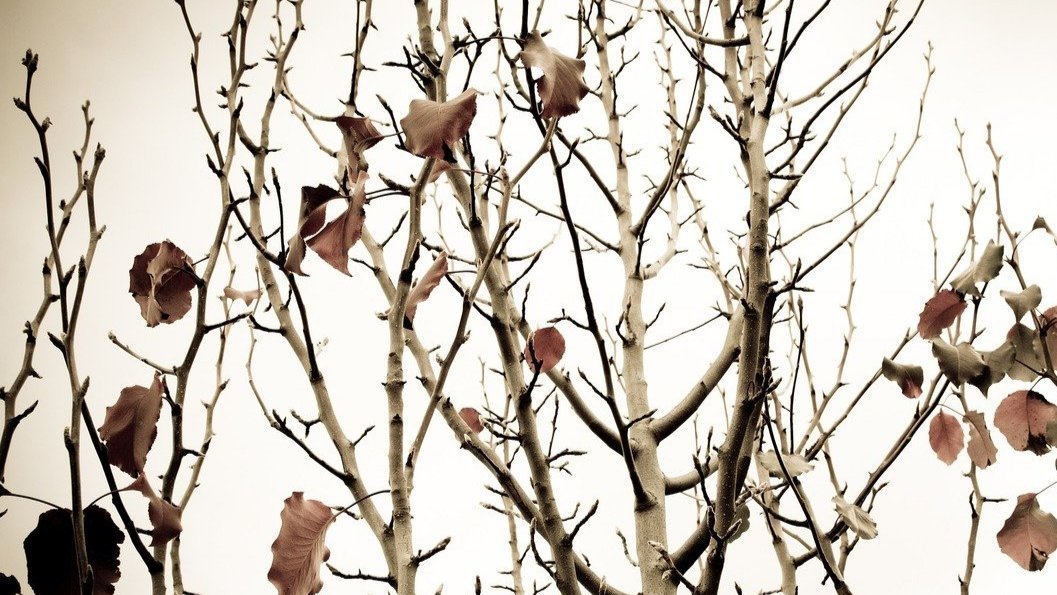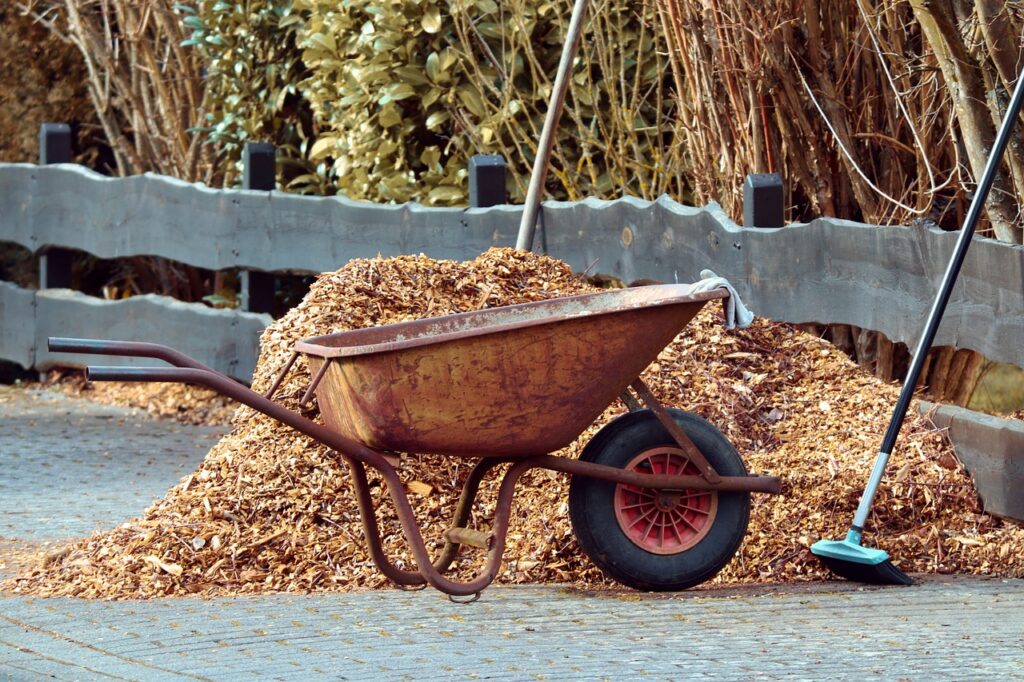Winter in Littleton, Colorado, is a sight to behold, but it can be equally unforgiving to your cherished trees and shrubs. The importance of proper winterization cannot be overstated; it’s the key to ensuring the health and vitality of your landscape. In this guide, we’ll carefully navigate through the essential steps required to prepare your Colorado trees and shrubs for the demanding winter season. While we all wish we could do it all for our home landscapes, practicality often limits our options. Hence, our team of seasoned arborists has compiled a list of five highly recommended strategies to focus on for winterizing trees in Littleton.
Tip 1: Wrap Your Trees to Winterize Them
Wrapping your trees at their base serves as a protective shield against the dangers of sunscald and frost cracking. Sunscald arises when the trunk heats up during sunny winter days and rapidly cools during frigid nights, potentially causing lasting damage to the trunk. Frost cracking, on the other hand, results from the freezing and cracking of the trunk, impeding the tree’s essential circulation. Even minor cracks can inflict substantial harm, hampering the tree’s growth.
Selecting and Finding Material to Wrap Trees
Begin by choosing an appropriate tree wrap material – typically something resembling papery, corrugated cardboard. When you embark on the journey of winterizing trees in Littleton, this wrap becomes your steadfast ally, so make sure it’s a material that’s easy for you to work with. Alternatively, instead of repurposing materials, tree wraps can be purchased online and in stores. You have probably most commonly seen this familiar prefabricated wrap before on newly planted trees along the city streets. For purchasing tree wraps to winterize trees near Littleton, CO, we recommend taking advantage of the convenience of online platforms like Amazon and doing a search for tree wraps. While local hardware stores such as Home Depot may stock them in the garden section, availability can be inconsistent. Ordering online eliminates the frustration of fruitless trips to the store. Additional Note: You may require a roll of duct tape to secure the wrap at both the top and bottom, ensuring it remains steadfast throughout the winter season.
Proper Wrapping Technique
When wrapping trees, exercise caution not to make it overly tight; the objective is to secure it without constricting the tree. Generally, we recommend applying the wrap when the tree is shedding its leaves and removing it in late April to early May, coinciding with the time you would typically prepare your lawn sprinklers. This timeframe guarantees that the tree derives maximum benefit from the added protection during the coldest months.
Tip 2: Mulch The Base of Your Trees to Winterize Them
In the quest to winterize your trees in Littleton, Colorado, the certified arborists at Fielding Tree Care suggest a crucial practice that complements protection against harsh winter conditions: mulching. Applying mulch at the base of your trees provides invaluable insulation and safeguards the root zone during the chilly months.
Selecting the Right Mulch for Winterizing Trees
The choice of mulch plays a pivotal role in effective winterization. Opt for materials such as wood chips, shredded leaves, or bark, which decompose slowly and offer exceptional insulation. While some may advocate for straw, we firmly recommend wood chip mulch, as it doesn’t break down hastily or leach nutrients into the soil. This type of mulch establishes itself as a formidable protective barrier while preserving a stable root environment.
Proper Application for Winterization
When applying mulch, aim for a depth of only a couple of inches around the base of the tree, ensuring sufficient insulation without overwhelming the root zone. It’s crucial to maintain a few inches of space between the mulch and the tree trunk to prevent moisture buildup against the bark, thus reducing the risk of rot or disease. Refrain from creating “mulch volcanoes” that mound up against the trunk.
Expanding the Mulch Ring
Consider extending the mulch area in a wider circle around the tree, enveloping the entire root zone. This practice offers enhanced insulation and superior root protection while minimizing competition from weeds. Timing and Renewal for Winterization To brace your trees for winter, mulch in late fall or early winter before the ground freezes. Additionally, periodically inspect and replenish the mulch layer as it gradually breaks down over time. This maintenance can be performed in the spring or fall as needed to preserve effective insulation. Weed Suppression and Mulch Rings for Winterization Mulch serves as a potent weed suppressant, reducing resource competition and minimizing the necessity for herbicides. Deliberate creation of a mulch ring around the tree—a circular area devoid of grass or other vegetation—further deters weed growth.
Tip 3: Water Your Trees and Shrubs in the Dormant Season
Did you know that even during the dormant months, trees require water? This holds particularly true in Littleton when extended periods pass without significant snowfall or rain. While dormant, trees may not actively grow, but they still necessitate moisture to remain robust and healthy. Trees enter dormancy in the fall, enduring this state until they reawaken in the active growth season of spring.
Advantages of Dormant Season Watering for Winterizing Trees:

Dormancy encourages root development, especially in newly planted trees and shrubs. Adequate winter watering prevents the critical dryness that causes root die-off, ultimately hindering the tree’s growth in the following season. Consistent winter watering prevents dehydration and premature death, especially in young plants and trees. Littleton’s autumn and winter temperatures are marked by fluctuations, leading to occasional days with unfrozen ground. Monitor moisture levels during dormancy and provide supplementary watering when necessary, even for established trees.
Tips for Dormant Season Watering for Winterizing Trees:
Deep Soil Hydration
Maintain healthy trees by using a subsurface probe to distribute water effectively throughout the top 12 inches of soil surrounding the tree’s root system. This area requires the most attention during winter watering.
Winter Watering Strategy
Despite being the dormant season in most regions of the United States, including Littleton, it’s essential to address the potential dryness and drought conditions that winter can bring, which can stress trees and shrubs. Employing effective techniques to winterize trees in Littleton is crucial to ensure your landscaping remains resilient when spring arrives. It’s important to note that solely relying on snowfall won’t deliver adequate moisture to your trees. Therefore, on those occasional warmer winter days, consider providing your trees with a deep watering, thoroughly saturating the soil several inches deep. Be sure to allow the soil to fully dry between waterings to prevent the risk of root rot and other potential issues.
Additional Tips for Winter Watering:
- Water only when air temperatures are above 50 degrees Fahrenheit.
- Aim to water at midday to allow moisture to penetrate before potential nighttime freezing temperatures.
- As a general guideline, provide approximately 2 gallons of water for each diameter inch of the tree trunk. For example, a four-inch diameter tree should receive 8 gallons per watering, measured at knee height.
- Newly planted trees and shrubs require special attention, as they demand more water than established plants. Medium-sized shrubs should receive 5 gallons of water twice a month from October through March.
 Tip 4: Hire a Professional to Prune Your Trees and Shrubs to Winterize Them
Tip 4: Hire a Professional to Prune Your Trees and Shrubs to Winterize Them
Tree pruning is a fundamental practice in tree care, especially during the dormant season preceding winter. This not only enhances the visual appeal of your property but also contributes significantly to the overall health of your trees.
Winter Pruning Benefits for Winterizing Trees
Winter pruning provides a clearer view of the tree’s structure, facilitating the removal of water sprouts and crossing branches while helping to winterize trees in Littleton. Trees store nutrients in their roots during winter, and pruning during this period minimizes stress and resource loss. It’s a method of managing the tree’s energy expenditure, promoting healthier growth when spring arrives. Furthermore, it enables homeowners to control the tree’s appearance and prevent excessive growth.
Lessening the Chance of Infection
Pruning during the dormant season, after experiencing a few freezes, reduces the risk of disease transfer through cuts. When trees are dormant, the likelihood of transferring infection from an infected cut to a clean one or from tree to tree is diminished. Insects are less active during this period, and bacterial activity is generally lower in winter. By the time spring returns and diseases become more prevalent, wounds have had time to dry out and begin the healing process, making it less likely for infections to spread.
Essential Shrub Pruning Techniques to Consider for Winterizing Trees:
Rejuvenation Pruning for Shrubs
- Annual Basal Thinning: Start by removing excess growth at the base of shrubs. This promotes better air circulation and reduces the risk of disease.
- Removing Deadwood: Regularly eliminate dead branches. Not only does this prevent potential hazards during winter storms, but it also encourages new growth.
- Thinning Overcrowded Stems: Improve sunlight penetration by reducing the number of stems, and prioritizing the removal of the oldest and largest ones.
- Crown Reduction: Trim stems that extend far beyond the crown to maintain a balanced shape and prevent damage during heavy snowfall.
Regeneration Pruning: Starting Fresh
- Cutting Near the Ground: For severely overgrown or unhealthy shrubs, consider cutting them nearly to the ground. In cases of very poor health, cut to half their height for the first year.
- Yearly Thinning: Follow up with annual thinning to promote vigorous new growth and maintain an appealing shape.
Tip 4: Be Advised That Fire Blight Is a Problem in Littleton
This year has witnessed a significant resurgence in the prevalence of fire blight in Littleton, marking a notable departure from the relatively uneventful last four years in this regard. The underlying reasons for this resurgence are multifaceted, primarily attributed to the exceptionally wet spring we experienced. The absence of sudden temperature drops, which could have curbed the bacteria responsible for fire blight, contributed to its unchecked proliferation. Moreover, the copious moisture levels facilitated the rapid spread of the infection, with the lush shoot growth on trees making them particularly susceptible. The unfortunate occurrence of hail damage further compounded the issue, creating numerous open wounds that served as breeding grounds for fire blight. Consequently, fire blight has spread extensively, necessitating urgent attention in the upcoming winter months. It is imperative for individuals to be vigilant and proactive in addressing fire blight-related concerns. If you observe branch tips displaying signs of browning or wilting akin to scorching, it would be beneficial to document these occurrences with accompanying images. For more information on how to identify Fire Blight, visit our article on the subject.
Pay Special Attention to Your Fruit Trees
Instances have been reported where tree branches appear to be severely affected, with the last several inches of every branch exhibiting a curled, scorched appearance. This infection tends to propagate rapidly, and a timely response during the winter months is crucial, as delays may significantly limit treatment options for the following year. Notably, crab apples, Chanticleer pears, and Hawthornes are among the most commonly found landscape trees in regions such as Highlands Ranch. Given their prevalence in the area, it is crucial to keep a watchful eye on these trees. It may also be prudent to monitor neighboring trees for fire blight symptoms, as preventative measures can be implemented to protect your own trees if the disease is detected in the vicinity. It’s also important to mention the effect of improper pruning practices by homeowners or undertrained professionals. Often, individuals may attempt clearance pruning or removal of obstructive branches without adhering to proper techniques. Such haphazard pruning can create entry points for diseases and other issues, especially on trees that are susceptible to these problems. Therefore, it is advisable to exercise caution and seek professional guidance when performing tree pruning activities, especially during a season of increased Fire Blight Risk.
Combating Fire Blight
- Identify Symptoms: Be vigilant for signs like wilting, blackening, and curling of leaves, as well as the appearance of oozing, amber-colored liquid on branches.
- Pruning and Removal: Promptly prune and remove affected branches, making sure to cut at least 8-12 inches below visible symptoms.
- Sterilize Tools: Disinfect pruning tools between cuts to prevent the spreading of the disease.
- Choose Resistant Varieties: Consider planting tree varieties that are less susceptible to fire blight.
Help Your Trees Remain As Strong As Possible During Colorado Winters
By taking these steps to winterize trees in Littleton, you’re not only protecting your local environment but also contributing to their long-term health and resilience, particularly crucial for young trees in Colorado’s challenging climate. Remember, the damage prevention provided by proper winterization measures is invaluable in ensuring your trees thrive for years to come. At Fielding Tree Care, we are dedicated to ensuring the health and resilience of your trees during the harsh winter months in Littleton and South Denver. Our expert team specializes in winterization practices that safeguard your trees against the cold weather and its potential threats. We possess a profound understanding of the unique challenges posed by the Colorado climate and have the expertise to prepare your trees for winter effectively. Our commitment to quality and ongoing education in the latest tree care techniques sets us apart as trusted professionals in the field. If you require assistance with winterizing your trees or have concerns about their well-being during the colder months, do not hesitate to reach out to our certified arborists. We are here to provide you with the guidance and information you need to ensure your trees thrive in the winter season. From implementing winterization strategies to tailoring plans for your specific trees, we are your dedicated partners throughout the process. And remember, our services extend beyond winterization. Fielding Tree Care offers a comprehensive range of tree care solutions in Littleton and the South Denver area. We invite you to explore our website to learn more about our services and service areas and how we can assist you in caring for your trees year-round.
Our Service Area









